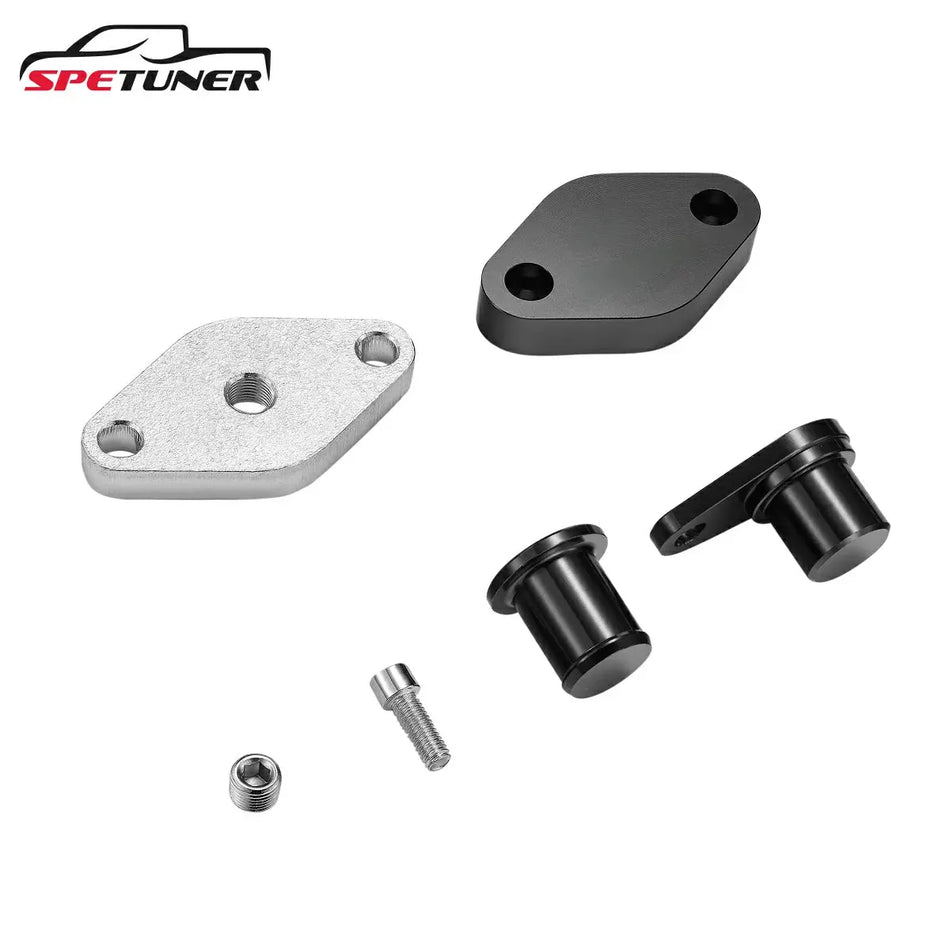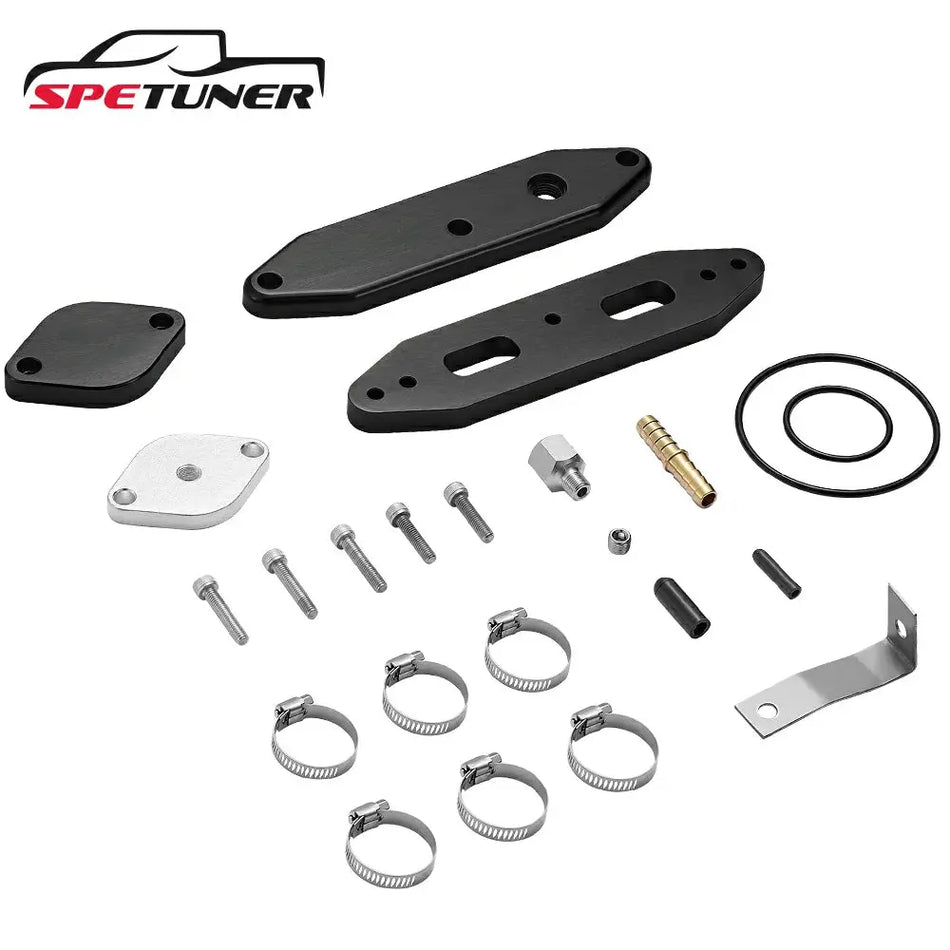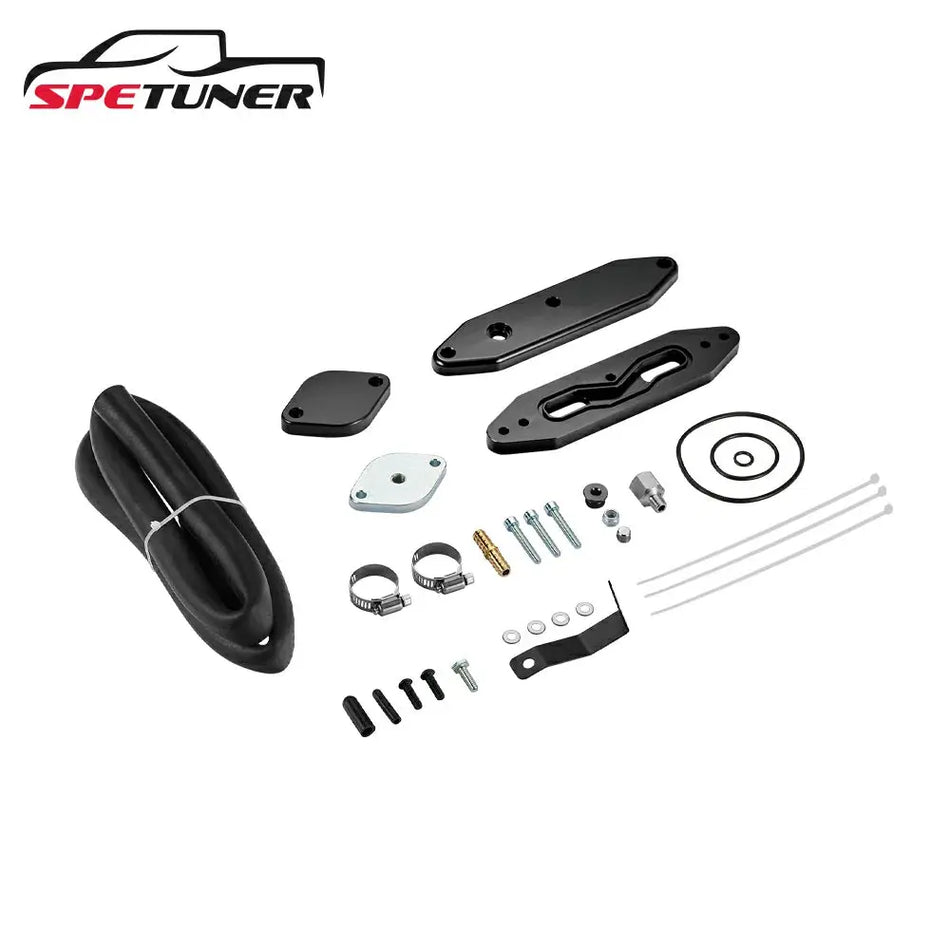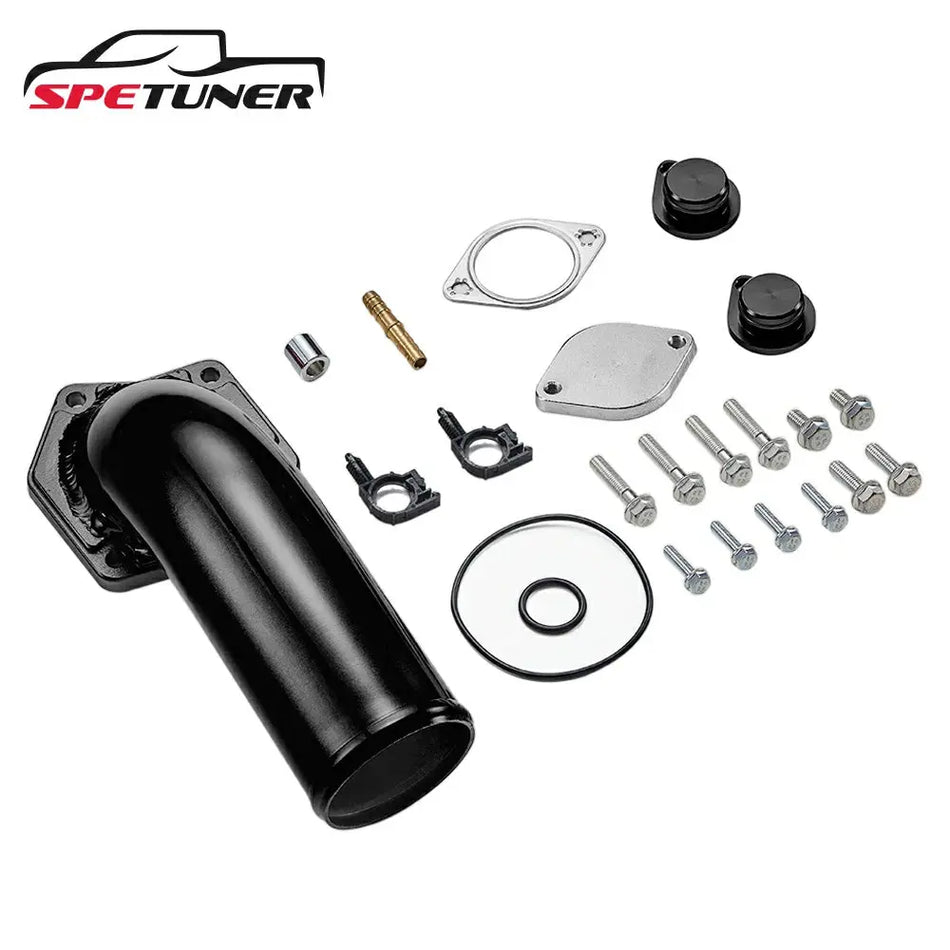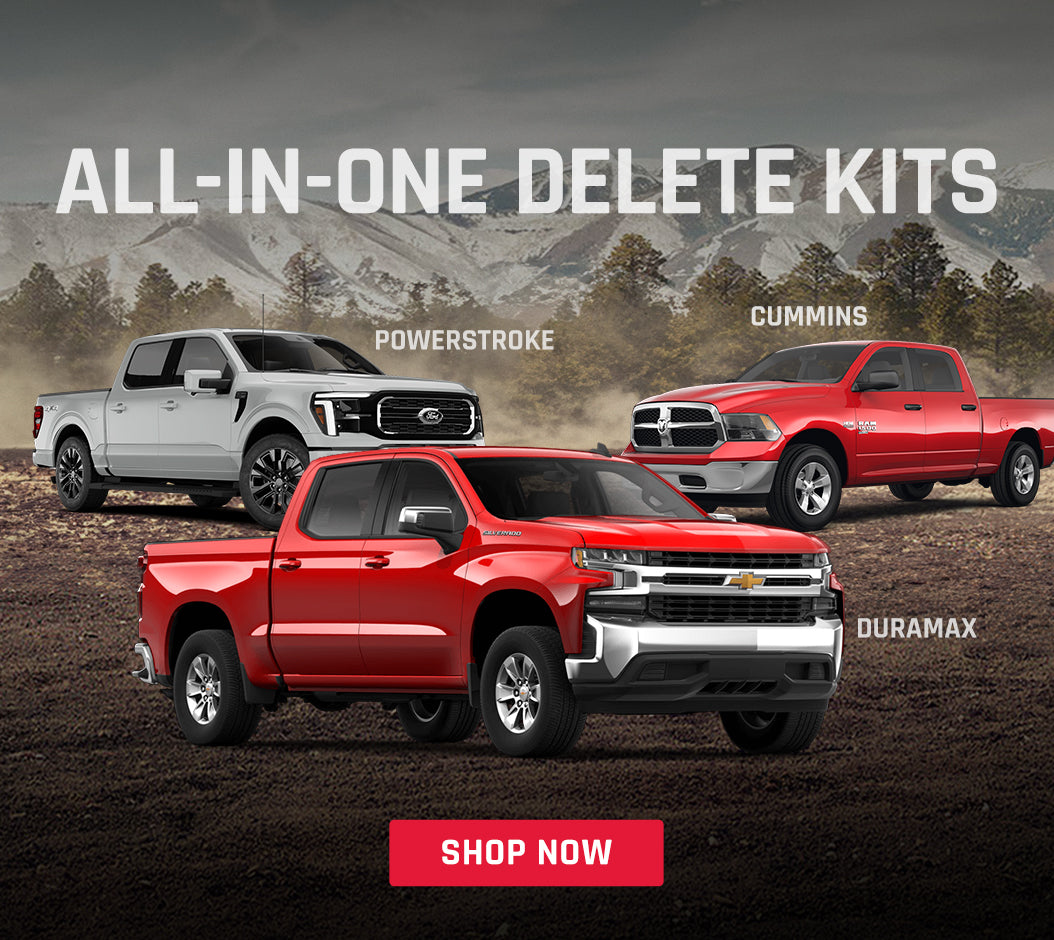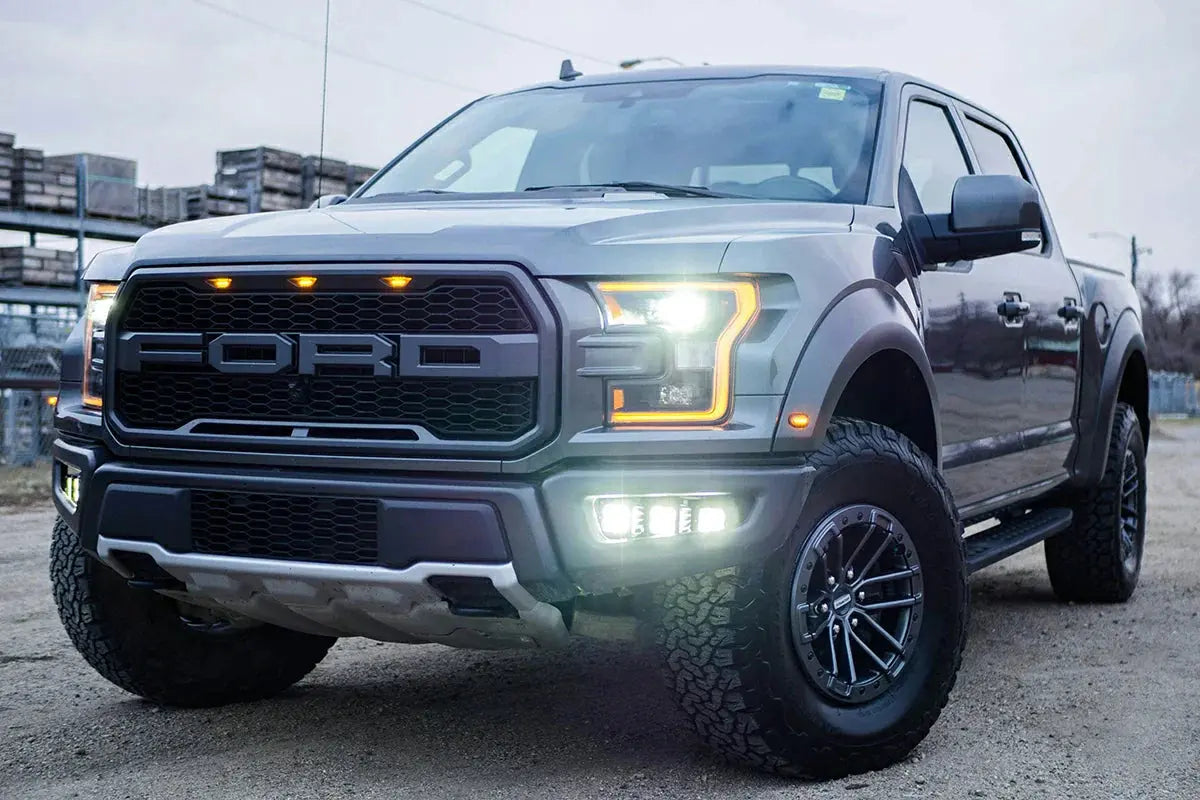Click to view the installation diagram and access the installation PDF document.
Follow our comprehensive L5P 6.6 Duramax 4" DPF Downpipe install instructions for improved exhaust flow, enhanced performance, and easy installation. Upgrade your truck today!
Step 1: Removing the OEM Exhaust System
1.1 Preparation and Tools Needed
Before you begin installing the new 4" DPF Downpipe-BACK exhaust system, it’s crucial to have all the necessary tools at hand. Having the right tools ensures that you can remove the OEM exhaust system efficiently and set up the new one without complications.
You will need:
· Wrenches and screwdrivers: Basic tools to help you remove the bolts on the exhaust pipes.
· Cutting tools: In some cases, you may need to cut the exhaust pipe if the new system doesn’t fit. This is usually necessary for certain models.
· Rubber gloves and safety glasses: Safety is essential, so be sure to wear gloves and glasses to protect yourself during the removal process.
· New gaskets and connectors: Make sure to have fresh gaskets and connectors for the installation of the new exhaust system.
With these tools ready, you're prepared to begin removing the OEM exhaust system.
1.2 Removing the OEM Exhaust System
When removing the OEM exhaust system, you’ll start by detaching the bolts from the downpipe’s flange. This involves four bolts that connect the exhaust pipe to the engine system. Be careful when removing these bolts, as they might be reused later, so try not to damage them.
Next, you’ll remove the bolts from the section of the pipe between the catalytic converter and the DPF (Diesel Particulate Filter). This can be tricky, especially in the area near the torsion bar crossmember. Here, you’ll need to remove an additional four bolts.
Be sure to also remove any sensors and metal hangers attached to the exhaust system. This may involve using pliers or wrenches to remove the hangers.
Note: Not all models require cutting the exhaust pipe. Cutting tools are only necessary if the length of the exhaust pipe doesn’t match the new system. If cutting is required, measure accurately to ensure the cuts are precise.
Once the OEM system is fully removed, you’ll be ready to install the new 4" DPF Downpipe-BACK exhaust system.
Step 2: Installing the New Exhaust Pipe
2.1 Installing Pipe #11711
After removing the OEM system, it’s time to install the first pipe, Pipe #11711. This is a crucial step in the installation process, and ensuring it’s installed correctly will help maintain the overall stability and performance of the system.
Position the Exhaust Pipe: Begin by positioning Pipe #11711 in place. Make sure the welded metal hanger fits into the OEM transmission isolator correctly.
Attach the Pipe: Slide the exhaust pipe into the flange connection and loosely tighten the four bolts. At this point, do not fully tighten the bolts yet to allow for further adjustments in the following steps.
Install the Gasket: Ensure that the gasket is properly seated in the connection area. The gasket plays a vital role in preventing exhaust leaks, which can affect your vehicle’s performance.
Lightly Tighten the Bolts: After positioning the exhaust pipe, loosely tighten the four bolts to secure the downpipe in place, ensuring the pipe is aligned with the flange.
At this stage, the Pipe #11711 will be installed in place, setting you up for the addition of extension pipes and the next components.
2.2 Installing Extension Pipes and Pipe #11212
Next, you'll install Extension Pipe #40012 and #40018, as well as Pipe #11212. Depending on your vehicle’s wheelbase, you may need to cut the extension pipes to fit correctly.
Position Pipe #11212: Install Pipe #11212, ensuring that its hanger fits into the factory location. Align it with the newly installed Pipe #11711.
Cut and Install Extension Pipes: If necessary, cut the extension pipes to match your vehicle’s specifications. This step depends on the length of the wheelbase, so measure carefully before making any cuts.
Secure the Pipes: Attach the extension pipes and Pipe #11212, ensuring all connections are secure and tight. Use proper clamps to keep everything in place.
By completing this step, you'll have successfully connected the pipes and prepared the system for the muffler delete and axle pipe installation.
Step 3: Installing the Muffler Delete and Over-Axle Pipe
3.1 Installing Muffler Delete #40220
With the primary exhaust components in place, it's time to install the muffler delete. This component eliminates the stock muffler, reducing backpressure and improving exhaust flow, which ultimately enhances engine performance.
Position the Muffler Delete: Place Muffler Delete #40220 in its designated spot, ensuring it connects properly to the exhaust system.
Insert the Hanger: As with the previous components, make sure the metal hanger is inserted into the OEM isolator. This will secure the muffler delete in place.
Adjust and Secure: Once positioned, adjust the muffler delete to ensure there is no interference with other exhaust components. Tighten it into place to secure it.
This will allow for improved exhaust flow by eliminating the restrictive muffler and promoting a smoother exhaust flow path.
3.2 Installing the Over-Axle Pipe #11115
The over-axle pipe is essential for routing the exhaust smoothly under the vehicle’s axle and connecting it to the tailpipe. This part plays a crucial role in reducing backpressure and increasing overall exhaust efficiency.
Position the Over-Axle Pipe: Place Over-Axle Pipe #11115 in the designated position under the vehicle, ensuring that it fits properly with the muffler delete and other exhaust components.
Insert the Hanger: Attach the hanger to the OEM isolator, just like the other pipes, ensuring it’s securely mounted.
Align and Tighten: Check the alignment of the over-axle pipe and make sure there is no interference with the vehicle’s undercarriage. Once aligned, tighten the connections securely.
Step 4: Installing the Tailpipe #11716
4.1 Adjusting the Tailpipe Position
The tailpipe is the final component in the system, and it’s essential that it is positioned correctly for both functionality and appearance.
Position the Tailpipe: Place Tailpipe #11716 into the proper position and connect it to the exhaust system. Ensure it aligns well with the rest of the pipes.
Insert the Hanger: Insert the tailpipe’s metal hanger into the OEM isolator to secure it in place. The tailpipe should be aligned to ensure proper exhaust flow and aesthetic appeal.
Align and Adjust: Once in place, double-check that the tailpipe is correctly aligned with the other components, making sure it does not interfere with the undercarriage or other parts of the vehicle.
4.2 Final Adjustment of Tailpipe Position
After installing the tailpipe, make any final adjustments to ensure it doesn’t make contact with any other parts of the vehicle.
Ensure Proper Clearance: Check the clearance between the tailpipe and the vehicle’s body, suspension, or axle. Ensure there is no contact that could cause damage or create noise.
Adjust the Angle: If needed, adjust the angle of the tailpipe slightly to ensure optimal exhaust flow and prevent exhaust gases from being redirected in undesirable directions.
Secure the Tailpipe: Once everything is aligned and adjusted, tighten the connections to secure the tailpipe in place.
Step 5: Tightening All Components and Completing the Installation
5.1 Tighten All Clamps and Bolts
Now that all components are in place, it’s time to ensure everything is securely fastened.
Tighten from Front to Back: Start by tightening the bolts at the front flange connection, working your way toward the back. Make sure all bolts are tightened securely but not over-tightened to avoid damaging gaskets.
Check for Leaks: Once all bolts are tightened, inspect every connection to ensure there are no leaks. A properly installed exhaust system should be sealed tightly to prevent any exhaust gases from escaping.
Use a Torque Wrench: For added precision, use a torque wrench to tighten the bolts to the recommended torque values. This ensures that the connections are neither too loose nor too tight.
5.2 Final Check After Installation
After completing the installation, perform a final inspection to ensure everything is in place and secure.
Check for Proper Alignment: Verify that all components are aligned properly and securely connected. Ensure the system is free from interference or contact with other vehicle parts.
Run the Engine: Start the engine and check for unusual noises or leaks in the exhaust system. Ensure everything is functioning correctly.
Conclusion: The Final Steps to Enhancing Your Duramax's Performance
With your new 4" DPF Downpipe-BACK exhaust system fully installed, you'll experience a noticeable improvement in your Duramax’s performance. The exhaust flow is significantly enhanced, reducing backpressure and increasing engine efficiency.
Don’t forget to periodically check your exhaust system to ensure it remains secure and efficient. Regular maintenance and inspection will help prolong the life of your system and maintain its high performance.
Ready to take your Duramax to the next level? Visit SPETUNER today to explore our high-quality exhaust systems and performance parts. Upgrade your truck with our top-of-the-line products for a smoother, more powerful ride.
Click here to shop now and experience the difference!



